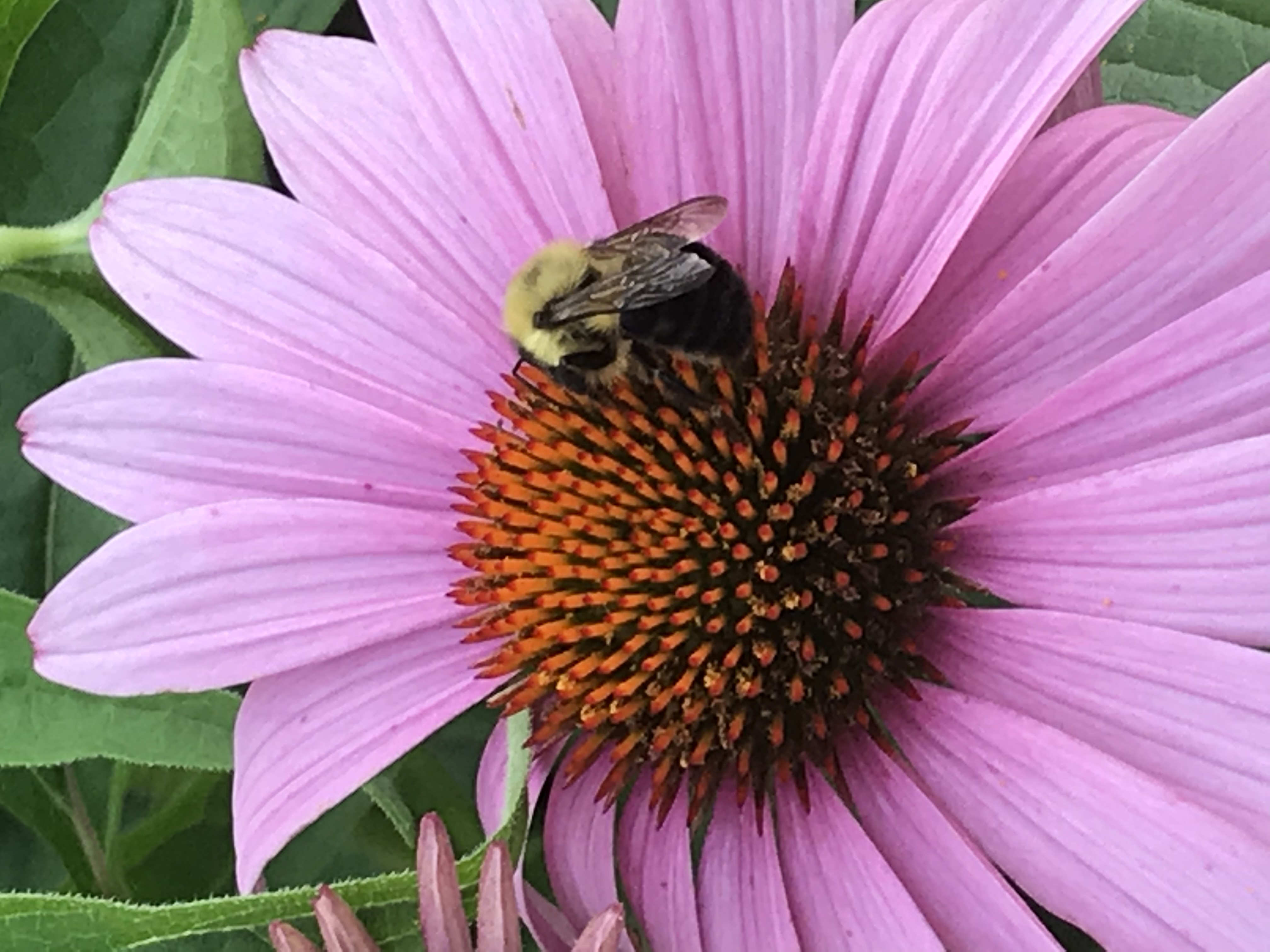
SUBSCRIBE PREVIOUS ISSUES
Spotlight
NIH Post-Bac Garden Club
It has been almost two years since our last check-in, but the NIH Post-Bac Garden Club on the Bethesda campus is still going strong! Although the club is open to all staff regardless of background, its foundation was built on post-bacs like Stella Whittaker and Reid Suddaby. They are post-baccalaureate fellows in NINDS, with Stella in the Cell Biology and Biophysics Section and Reid in the Infections of the Nervous Systems Section. These post-bacs are excited to share their perspectives on how the club has been a source of fun and relaxation.
“It's a good complement to doing science in the lab because you can experiment in a much more low-stakes, low-stress environment." Stella says.
“It's a great way to unplug after work, after doing all this 'using my brain.' It's nice just to get on my knees, get in the dirt, weed, and have a very stress-free environment." Reid adds.
While they are big advocates of the Garden Club, Stella and Reid haven't always been gardeners. Outside of family members gardening, neither of them had any real, applied experience. Despite this, through their participation in the club, they have gained not only the hard skills to keep the garden going, but also the soft skills to keep the team going.
“I learned a lot of strategies of … how to organize groups where people are kind of scattered or maybe have other commitments going on. Beyond that, I've learned patience." Stella reflects.
Despite the stress-free environment and easy-going members, the Garden Club has one difficulty that continues to harrow them: membership. While people often come to give the club a try, the group is lacking more committed members that will continuously show up to spur the garden along. Joining the club, for those interested, is quite easy.
“You're always welcome. We're always taking new people." Reid encourages.
“Don't be stressed if you're not there at the beginning. You can join in the middle. You can join towards the end. You can join at any time." Stella adds.
The benefits of gardening are well-documented, such as having a means of consistent exercise, securing a source of fresh produce, reducing the environmental impact of transporting groceries and supporting local pollinator populations.
Above all else, Reid leaves us with these sentiments:
“To garden, you reap what you sow. It can be a multi-month process where, yeah, maybe it's not fun having bugs biting you after work, but the reward of it is truly amazing."
Click here to read the full interview or listen to it below. If you are interested in joining the Garden Club, contact Anirban Banerjee.
Featured Article

|
What is Biobased?
Biobased procurement remains a crucial initiative for federal government acquisitions. In this article, we will review what biobased products are and the labels used in their purchase.
LEARN MORE
|
Take Action

| Get Gardening!
Gardening comes in all shapes and sizes, so there is bound to be an aspect of gardening that fits you! From a backyard to a balcony, from a windowsill to even a mason jar, there is likely a space you could be using to grow some fresh, healthy produce. Getting started is quite easy!
LEARN MORE |
NEMS Training
Did you know? Many NIH campuses and their nearby cities have community gardens where you can rent space to do your own gardening. For example, you can join local groups on the Bethesda or RML campuses to access their respective garden plots. To learn more about sustainability at the NIH, please visit the NEMS Training webpage to view a short (20 minute) NIH environmental awareness training video.
Newsletter Feedback If you found this article useful, please let us know! We appreciate hearing how we might improve our future articles, including topics you would like to read about. Please take a moment to complete this quick feedback form:
The NIH Green Zone Newsletter is a publication intended to inform NIH staff about the Division of Environmental Protection and NIH Green Teams projects and initiatives. The text contained in this newsletter is not copyrighted and can be reprinted without permission. If you use portions of this newsletter in your own publication, we ask that you please credit the source. We welcome your comments and suggestions. Thank you.
|
|---|
|
Division of Environmental Protection | Office of Research Facilities | Office of Management
National Institutes of Health | U.S. Department of Health and Human Services
|